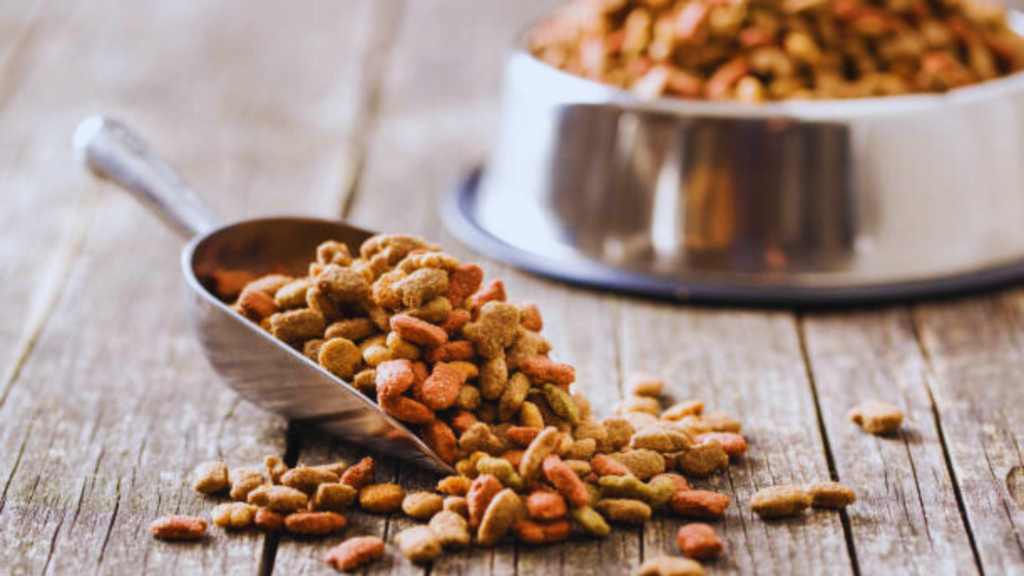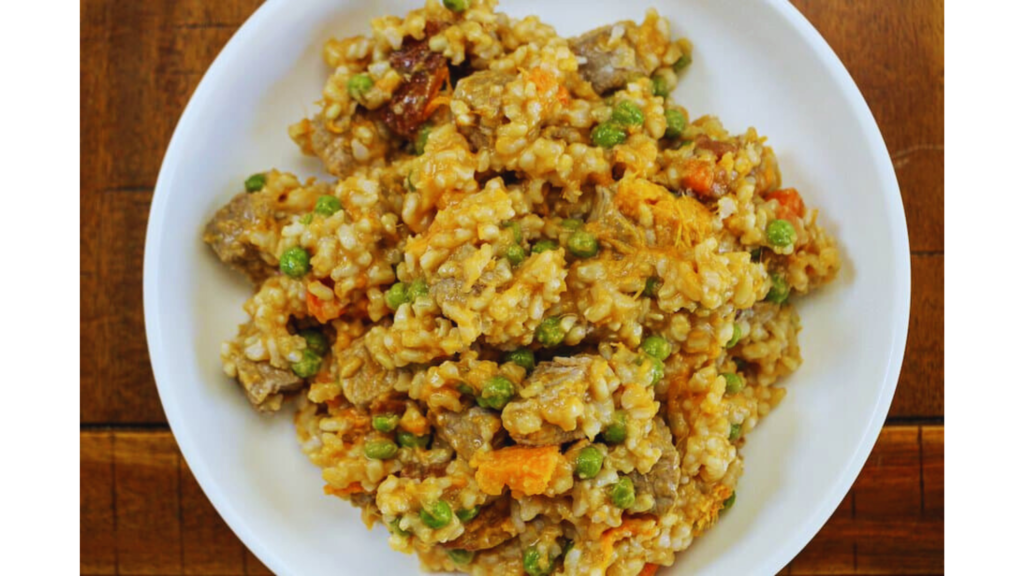Choosing the right dog food can be overwhelming, given the plethora of options available in today’s market. From commercial kibble and canned food to homemade meals, raw diets, and specialized formulas, each type of dog food offers unique benefits and challenges.
Discover why Afghan Hound collars are wide by exploring the unique characteristics of this breed and how wide collars enhance their comfort and style.
Understanding the different dog food types, along with their nutritional profiles and practical considerations, is crucial to ensuring that your pet leads a healthy, happy life. I will explore the main categories of dog food, providing insight into their advantages and disadvantages while offering tips to help you make an informed choice.
Blog Highlights
ToggleUnderstanding the Variety in Dog Food
Dogs are more than just pets—they’re family members, and their dietary needs deserve careful attention. The right food can support overall health, boost immunity, and even improve behavior and longevity.

Dog food can generally be divided into several categories, including commercial dry and wet foods, homemade meals, raw diets, dehydrated options, and specialized formulas like prescription or limited-ingredient diets. Each type is formulated with different ingredients and processing methods, meaning that what works for one dog might not work for another.
Commercial Dog Food: Dry, Wet, and Semi-Moist Options
Commercial dog food is perhaps the most common choice among pet owners. It comes in three primary forms: dry kibble, wet canned food, and semi-moist varieties.
Dry Kibble
Dry kibble is popular due to its convenience, long shelf-life, and affordability. Typically, kibble is formulated to meet the nutritional standards set by regulatory bodies, ensuring that your dog receives balanced amounts of protein, fats, and carbohydrates. Kibble also helps maintain dental health by reducing plaque buildup as your dog chews.

Wet Canned Food
Wet dog food generally contains higher moisture content, which can be beneficial for dogs that need extra hydration or have difficulty chewing dry food. It tends to be more palatable, making it a good choice for picky eaters or dogs with dental issues. However, canned food may not be as convenient for storage and can be more expensive.

Semi-Moist Options
Semi-moist dog foods strike a balance between dry and wet food. They are easy to serve and store but often contain more preservatives and sugars than their dry or wet counterparts. While these might appeal to some dogs, they might not be the best long-term option for overall health.
Commercial dog foods are designed to be nutritionally complete and convenient. Yet, it is important to read labels and understand ingredient lists, as not all commercial foods are created equal. Some may include fillers or artificial additives that could be problematic for sensitive dogs.
Find out what style dog collar is best for hounds to ensure comfort and safety for your furry friend.
Homemade Dog Food: Tailored Nutrition for Your Furry Friend
Homemade dog food offers the advantage of complete control over what your dog consumes. Pet owners can choose high-quality, fresh ingredients that are free from additives and preservatives. When prepared correctly, homemade meals can be balanced and tailored to your dog’s specific needs—whether that means addressing allergies, sensitivities, or specific health conditions.

Preparing homemade dog food, however, requires time, effort, and a solid understanding of canine nutrition. It’s crucial to ensure that meals are nutritionally complete. Balancing proteins, carbohydrates, fats, vitamins, and minerals can be challenging, and working with a veterinarian or a pet nutritionist is recommended. While homemade dog food can be highly beneficial, it does come with the responsibility of careful planning and ongoing monitoring.
The Raw Diet: Unprocessed, Natural Feeding
A raw diet for dogs involves feeding them uncooked meats, bones, fruits, and vegetables. Advocates of raw feeding believe that it mimics a dog’s natural ancestral diet and can lead to improved coat condition, better digestion, and higher energy levels. Raw diets are often prepared at home, though there are commercially available raw options as well.

While the raw diet can offer several benefits, it also presents potential risks. Improper handling of raw meat can lead to bacterial contamination, and there is always the risk of an imbalanced diet if proper care isn’t taken.
Raw feeding requires diligent research, careful sourcing of ingredients, and strict hygiene practices to prevent foodborne illnesses. Moreover, some veterinarians express concerns over the potential for nutrient deficiencies if a raw diet is not properly formulated.
Dehydrated and Freeze-Dried Dog Food: The Best of Both Worlds
Dehydrated and freeze-dried dog foods are gaining popularity as they provide the benefits of a raw diet while eliminating many of the risks associated with handling raw meat. These foods are typically made by removing moisture from raw ingredients, preserving nutrients, and extending shelf life. To serve, pet owners simply rehydrate the food with water, which helps restore its original texture and flavor.
This type of dog food tends to retain more of the natural nutrients found in raw ingredients while being more convenient and easier to store than fresh raw diets. Although they may be more expensive than traditional commercial foods, many pet owners find that the benefits—such as improved digestion and palatability—justify the cost.
Specialized Diets: Prescription, Limited-Ingredient, and Therapeutic Options
Specialized dog food types cater to dogs with specific health issues or dietary restrictions. These formulas are often developed in collaboration with veterinarians and are designed to address conditions like kidney disease, allergies, or digestive sensitivities.
Prescription Diets
Prescription diets are formulated to manage or treat specific health conditions. For instance, dogs with kidney issues may benefit from foods that are low in phosphorus and high in quality protein, while those with diabetes might need low-glycemic diets. These diets should only be used under veterinary supervision, as they are tailored to individual health needs.
Limited-Ingredient Diets
Limited-ingredient diets are designed for dogs with food allergies or sensitivities. By minimizing the number of ingredients, these diets make it easier to identify and avoid potential allergens. Although limited-ingredient diets may seem less nutritionally complex, they are carefully balanced to provide essential nutrients while reducing the risk of adverse reactions.
Therapeutic and Weight Management Diets
Therapeutic diets are specially formulated to address various health concerns, such as gastrointestinal issues, joint health, or obesity. Weight management formulas, for example, are designed to be low in calories but high in fiber to help dogs feel full while losing weight. These specialized diets offer targeted nutrition but are typically more expensive than standard commercial foods.
The ideal size collar for English Springer Spaniel typically ranges from 14 to 20 inches, depending on the dog’s age and neck size, ensuring a comfortable and secure fit.
Quick Comparison Table: Understanding Your Options
For a quick overview of the different dog food types, consider the table below:
| Type | Pros | Cons |
| Commercial Dry Food | Convenient, long shelf-life, dental benefits | May include fillers or additives, varying quality |
| Commercial Wet Food | High moisture content, palatable for picky eaters | More expensive, less convenient for storage |
| Semi-Moist Food | Easy to serve, balanced texture | Often contains preservatives and added sugars |
| Homemade Dog Food | Complete control over ingredients, customizable | Time-consuming, requires nutritional expertise |
| Raw Diet | Mimics natural diet, can improve coat and digestion | Risk of bacterial contamination, nutrient imbalance |
| Dehydrated/Freeze-Dried | Retains raw food benefits, convenient to store | Higher cost, rehydration required |
| Specialized Diets | Tailored to specific health needs | Usually more expensive, requires veterinary guidance |
Factors to Consider When Choosing Dog Food
When deciding on the best food type for your dog, several factors come into play:
- Nutritional Needs:
Dogs have unique nutritional requirements based on their age, breed, size, and activity level. Puppies, for instance, need higher calorie and nutrient-dense diets for growth, while older dogs might benefit from formulas that support joint health and are easier to digest. - Health Conditions:
Pre-existing health issues like allergies, digestive disorders, or kidney disease can significantly influence the choice of dog food. In such cases, specialized diets—whether commercial or homemade—may be necessary to manage these conditions effectively. - Lifestyle and Convenience:
Busy pet owners might prioritize convenience. Commercial dry food is appealing for its ease of use and storage, while those with more time and interest in cooking might opt for homemade meals. - Budget Considerations:
Cost is an important factor. While some high-end commercial or specialized diets can be expensive, they often include higher-quality ingredients. Homemade diets can also vary widely in cost depending on ingredient choices. - Personal Philosophy:
Ethical and environmental concerns often drive pet owners toward certain types of dog food. For example, those who are environmentally conscious or vegan might choose plant-based diets, while others may prefer a raw or minimally processed diet for its perceived natural benefits.
Making an Informed Decision
Choosing the right dog food involves weighing the pros and cons of each type and considering your dog’s unique needs. Research, consultation with veterinarians, and even trying different options can help you determine the best diet for your pet.
Many owners find that a combination of food types works best—using commercial food for convenience and supplementing with homemade or raw meals to provide variety and extra nutrition.
The recommended size collar for an English Cocker Spaniel usually ranges from 12 to 18 inches, providing a snug and comfortable fit for your dog.
It is also important to monitor your dog’s health closely when switching diets. Changes in coat condition, energy levels, and overall behavior can be indicators of how well your dog is adapting to a new food type.
Regular veterinary check-ups are essential to ensure that your chosen diet continues to meet your dog’s nutritional needs as they grow and change.
The Evolving World of Dog Food
The dog food industry is continually evolving. Innovations in food processing, ingredient sourcing, and nutritional science mean that new and improved products are regularly hitting the market. Pet owners now have more information than ever before, empowering them to make choices that align with their pet’s health requirements and their personal values.
From traditional commercial options to cutting-edge freeze-dried meals, the variety of dog food types available today means that there is likely a perfect fit for every canine companion. As awareness grows and research advances, the focus on high-quality, nutritionally complete diets will continue to shape the future of dog nutrition.
Conclusion
Understanding the different types of dog food is a vital step in ensuring that your furry friend receives optimal nutrition. Whether you choose commercial dry food for its convenience, homemade meals for their customization, or a raw diet for its natural appeal, the most important factor is that your dog’s diet is balanced, healthy, and suited to their specific needs.
Making an informed choice will not only contribute to your pet’s health but will also help you feel confident that you are providing the best care possible.
To find the perfect fit, learn more about what size collar for a Bichon, ensuring your dog’s comfort and safety.





